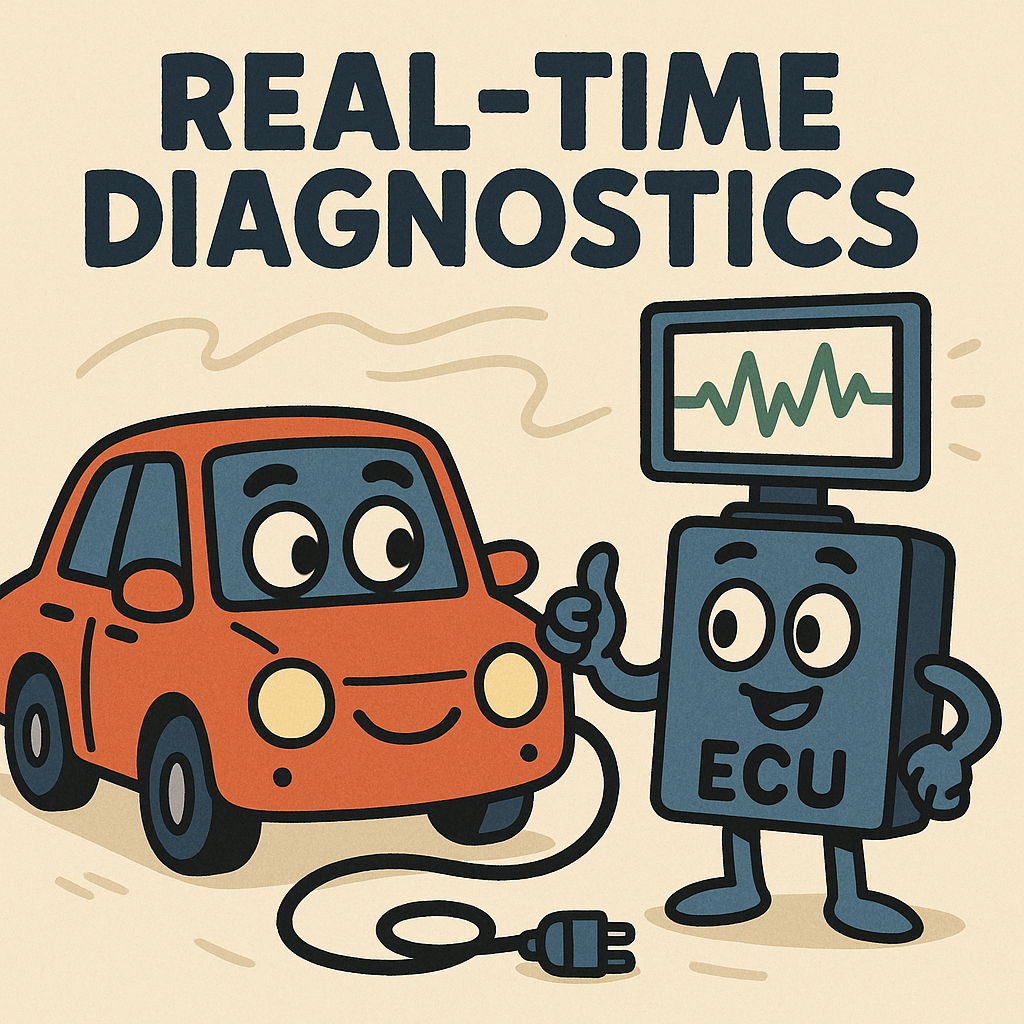Understanding Zonal ECUs and Their Role in Modern Vehicles
As the automotive industry shifts towards electrification and advanced driver-assistance systems (ADAS), the architecture of vehicles is undergoing a significant transformation. One of the key developments in this evolution is the implementation of zonal Electronic Control Units (ECUs). Unlike traditional point-to-point communication architectures, zonal ECUs consolidate multiple functions into a single unit, reducing wiring complexity and enhancing reliability. However, this shift brings forth new challenges regarding real-time diagnostics and firmware performance.
The Challenge of Real-Time Diagnostics
In a zonal ECU environment, the ability to perform real-time diagnostics is crucial for maintaining vehicle performance and safety. The complexity of these systems, coupled with the vast amount of data generated, poses significant challenges. Traditional diagnostic strategies often fall short, primarily due to their inability to process data in real-time and adapt to dynamic changes in vehicle behavior.
As vehicles become more software-defined, the need for real-time diagnostics becomes even more pressing. Firmware updates, system recalibrations, and fault detections must occur seamlessly, often while the vehicle is in operation. The challenge lies in designing a diagnostic system that can operate effectively within the constraints of limited computational resources and stringent timing requirements.
Architectural Considerations for Real-Time Diagnostics
Implementing real-time diagnostics in zonal ECUs requires a carefully crafted architectural approach. This involves a blend of hardware and firmware design considerations. At the hardware level, selecting a suitable microcontroller or FPGA is critical. The processing unit must have adequate computational power to handle complex algorithms while meeting real-time constraints.
Moreover, the choice of communication protocols plays a pivotal role. High-speed protocols like CAN-FD or Ethernet are often more suitable for real-time data transfer compared to their predecessors, enabling faster diagnostics and fault reporting. Additionally, integrating sensor fusion algorithms helps in aggregating data from multiple sources, enhancing the accuracy of diagnostics.
Firmware Design: Algorithms and Trade-offs
At the firmware level, the implementation of diagnostic algorithms must be optimized for both performance and resource consumption. For instance, implementing a rule-based diagnostic system can provide quick fault identification but may lack the adaptability required for complex scenarios. On the other hand, machine learning-based approaches can offer improved accuracy and adaptability but require more computational resources and complex training datasets.
One effective solution is to employ a hybrid approach that combines traditional algorithms with machine learning techniques. This allows for the rapid identification of common faults while leveraging the adaptability of machine learning for less frequent, complex issues. However, this approach introduces its own set of challenges, particularly regarding the need for continuous learning and model updates without disrupting vehicle operations.
Real-World Design Trade-offs
When designing for real-time diagnostics, engineers face numerous trade-offs. For instance, increasing the sampling rate of sensor data can enhance diagnostic accuracy but may also lead to increased power consumption and potential thermal issues. The balance between performance and efficiency becomes a critical design consideration.
Moreover, the integration of over-the-air (OTA) updates presents additional complexities. While OTA capabilities allow for quick firmware updates and improvements in diagnostics, they also necessitate robust security measures to prevent unauthorized access. This requires a layered security approach, incorporating encryption, secure boot mechanisms, and continuous monitoring to detect anomalies.
The Importance of Testing and Validation
Implementing real-time diagnostics is not merely about designing the system; it also involves rigorous testing and validation. The dynamic nature of vehicle operation means that diagnostic systems must be robust against a wide variety of conditions. Simulation tools can play a pivotal role in this process, enabling engineers to model different scenarios and assess the performance of their diagnostic algorithms under various conditions.
Additionally, hardware-in-the-loop (HIL) testing allows for real-time validation of the ECU against actual vehicle behavior, providing insights that can lead to further optimizations. This iterative process of design, testing, and refinement is essential for developing a reliable real-time diagnostic system.
Future Directions in Zonal ECU Diagnostics
As we look towards the future, the integration of artificial intelligence and advanced data analytics into zonal ECUs will likely enhance the capabilities of real-time diagnostics. The potential for predictive maintenance, where the system can anticipate failures before they occur, is an exciting frontier. However, achieving this requires a solid foundation of data collection, processing, and algorithmic sophistication.
Ultimately, the journey towards implementing real-time diagnostics in zonal ECUs is one of continuous learning and adaptation. As technology evolves and the demands on vehicle performance increase, the diagnostic systems must keep pace, ensuring that vehicles remain safe, efficient, and responsive to the needs of drivers and passengers alike.



